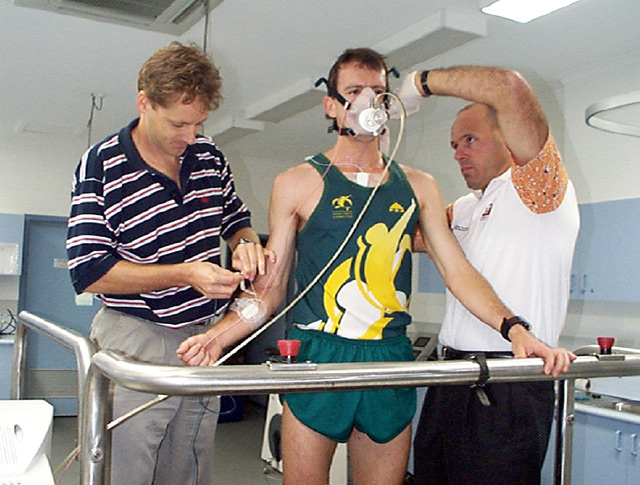Here is a little information about why you may want to, and how to get your research papers published in a scientific journal. This information is based on my (somewhat) limited experience in getting published. The requirements and procedures will vary around the world, so use this info but do your own homework too. Hopefully sharing my experience and knowledge may be helpful to some. Good luck.
 sport science research
sport science researchWhy Publish?
Scientists and students have many reasons to publish their work. You may just wish to have it available for others to see and reference, adding to the body of knowledge. It may also be a requirement of your honors,masters or doctorate thesis, or university position. The details of your paper may be just some observations, a review, or a scientific study that was part of a thesis, conference paper or poster - there is a place for each of these.
Where to Publish?
See this list of sport science publications. There is a lot to choose from. Papers presented at a conference may be published in the conference proceedings, but this does not undergo peer-review. Articles submitted to scientific journals are usually peer-reviewed, which means it is critically analyzed by others in your field, and therefore these papers have more respectability and trustworthiness.
So what journal do you choose to submit your paper to? Each journal has a different markets. Make a short list of a few journals, considering journals you have used for your own research and recommendations by your peers. Read through at least one issue of each journal on your shortlist. Check the impact factor of the journal - this is a measure of how often articles in a journal have been cited in a given period of time - to judge its popularity and respect in the field. You should also consider the publishing guidelines - some charge fees and require you to sign exclusivity clauses. Read the terms and conditions before you send off your paper.
Article Design
The paper title should be short but descriptive, and containing main keyword. The abstract should be clear descriptive, following the layout based on the journal author guidelines. For the references, make sure they are complete and correct as this is vital for reference linking and citation indices.
If there is more than one author, make sure you all agree on the order of appearance. Recognition of some research assistants may sometimes be better placed at the end of the document. If more than one person has been involved in the writing, ensure paper is checked by them all and edited so that it reads as a single voice. Before you send your paper, proof read it thoroughly and get others to read it.
Publishing Cycle
First of all you need to be prepared for some rejections. If you submitted to the top journal in your field, you may have to reassess the importance and quality of your paper, and be more realistic and send it to a more appropriate journal.
Many papers are rejected because they simply don’t fulfil the journal's requirements. If you have not formatted your paper correctly you may not even get into the review process. All journals publish their Author Guidelines, which cover such things as scope, type of paper, word length, and referencing style. Make sure you have all these covered.
If you are lucky, you will get your paper back, accepted with revisions. Reviewers can sometimes seem harsh. They are looking at maintaining the quality of the journal, and keeping the standards in style and type of papers published. They will look at the paper in terms of originality (is the topic new or novel?), does it build on existing knowledge, or provide a new angle? Is it written clearly and succinctly, provides a good argument with valid and objective conclusions? When you address the reviewers comments, make the changes you think are appropriate. Return the paper with a covering letter showing how you met the reviewers’ requests (and if not, clearly present your argument why not).
If you were rejected, try to improve the paper, and re-submit elsewhere. Don't give up, most people get rejected at least once. Good luck
Related Pages
- List of sport science publications
- online free access sport science journals
- publications by Rob Wood
- sport science conference calendar


 Current Events
Current Events